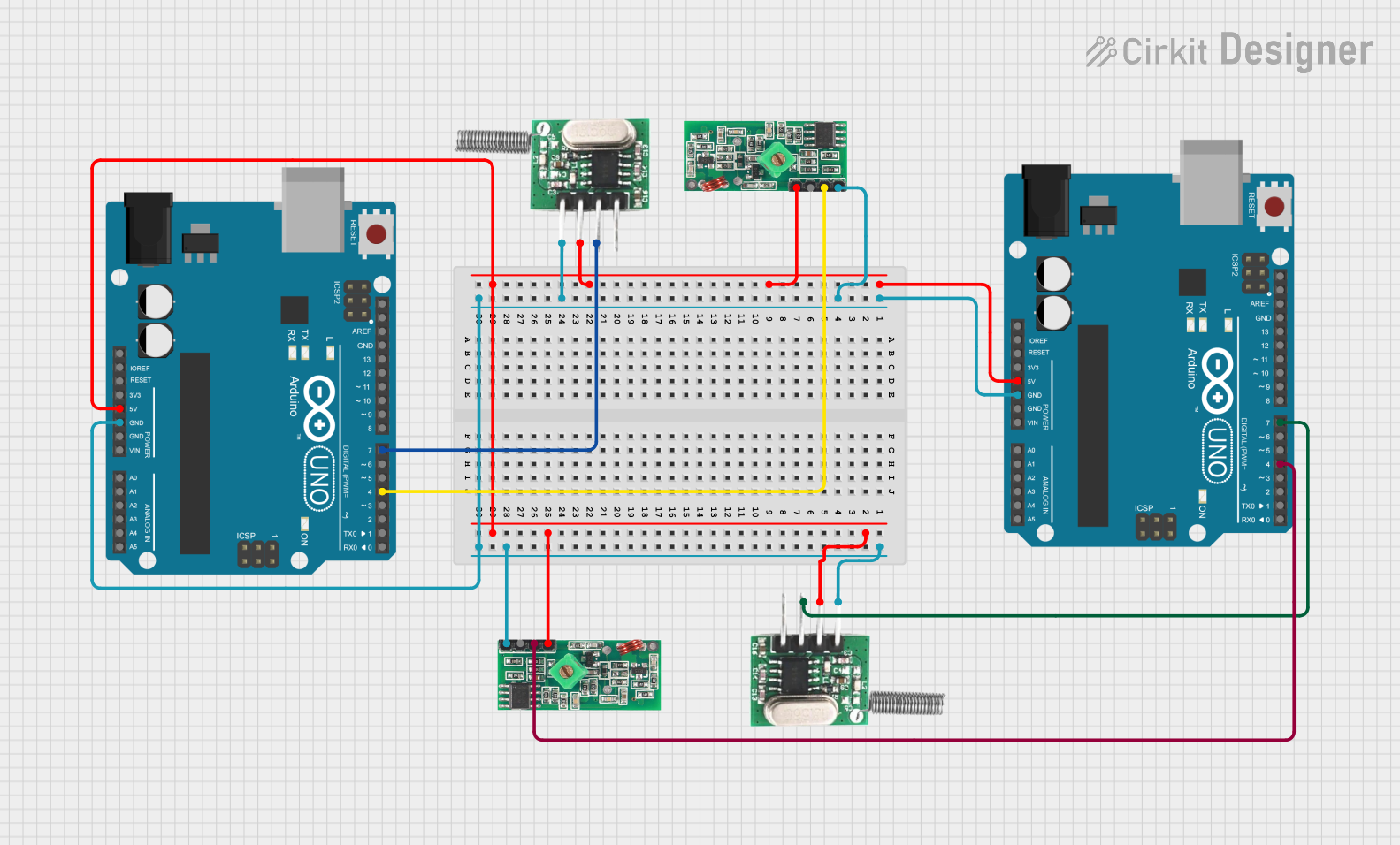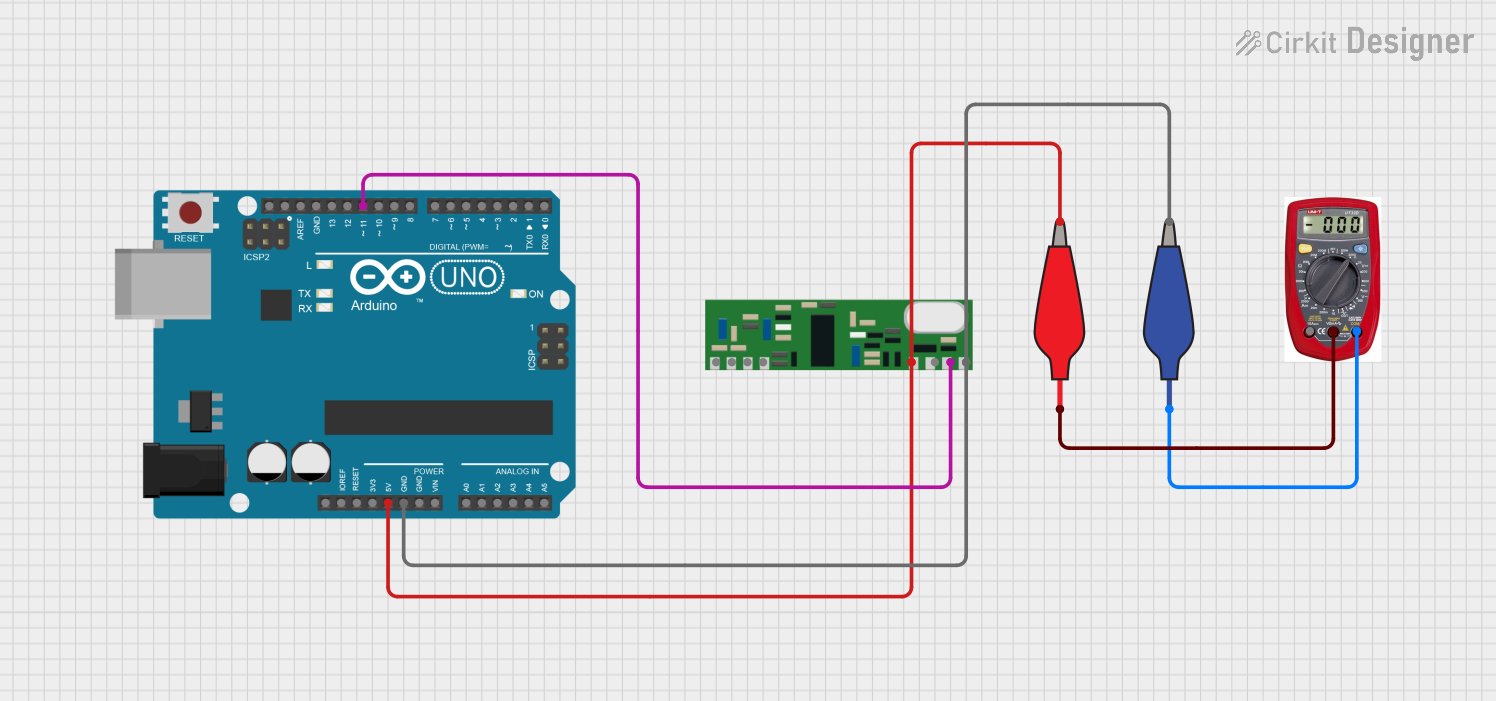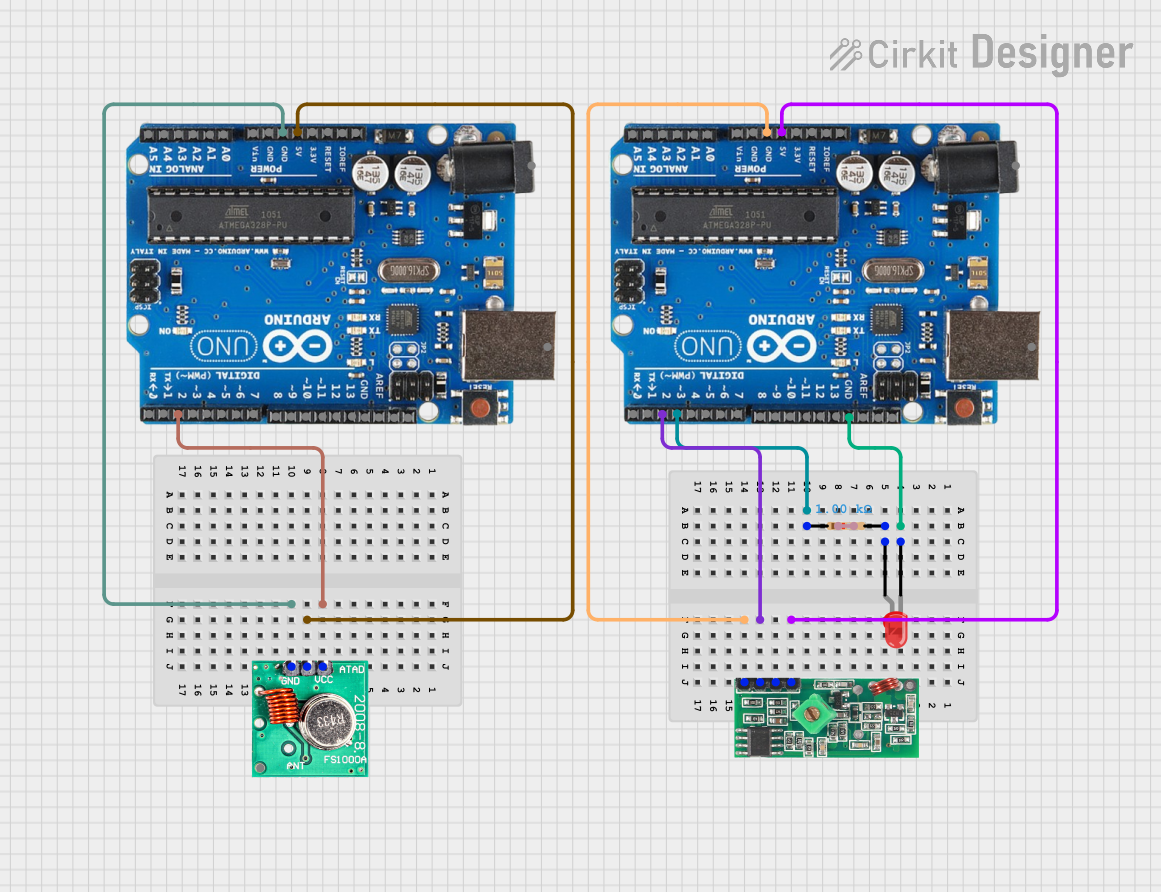
How to Use 433 MHz RF Receiver Module: Examples, Pinouts, and Specs

 Design with 433 MHz RF Receiver Module in Cirkit Designer
Design with 433 MHz RF Receiver Module in Cirkit DesignerIntroduction
The 433 MHz RF Receiver Module is a compact and low-cost module capable of receiving radio frequency (RF) signals at the 433 MHz frequency band. This frequency band is widely used for a variety of wireless communication applications, including remote control systems, home automation, and telemetry. Due to its ease of use and broad range, it is a popular choice for hobbyists and professionals working on wireless projects.
Explore Projects Built with 433 MHz RF Receiver Module

 Open Project in Cirkit Designer
Open Project in Cirkit Designer
 Open Project in Cirkit Designer
Open Project in Cirkit Designer
 Open Project in Cirkit Designer
Open Project in Cirkit Designer
 Open Project in Cirkit Designer
Open Project in Cirkit DesignerExplore Projects Built with 433 MHz RF Receiver Module

 Open Project in Cirkit Designer
Open Project in Cirkit Designer
 Open Project in Cirkit Designer
Open Project in Cirkit Designer
 Open Project in Cirkit Designer
Open Project in Cirkit Designer
 Open Project in Cirkit Designer
Open Project in Cirkit DesignerCommon Applications and Use Cases
- Remote control for garage doors, gates, and home appliances
- Wireless sensor networks
- Home automation systems
- DIY electronics projects
- Telemetry and remote measurement systems
Technical Specifications
Key Technical Details
- Operating Frequency: 433.92 MHz
- Modulation: ASK (Amplitude Shift Keying)
- Sensitivity: -105 dBm
- Operating Voltage: 5V DC
- Current Consumption: 3.5 mA (typical at 5V)
- Operating Temperature: -10°C to +70°C
Pin Configuration and Descriptions
| Pin Number | Pin Name | Description |
|---|---|---|
| 1 | VCC | Power supply (5V DC) |
| 2 | DATA | Data output pin |
| 3 | GND | Ground connection |
| 4 | ANT | Antenna connection (optional) |
Usage Instructions
How to Use the Component in a Circuit
- Connect the VCC pin to a 5V power supply.
- Connect the GND pin to the ground of the power supply.
- The DATA pin outputs the demodulated data signal, which can be connected to a microcontroller for decoding.
- For optimal reception, connect a 17.3 cm wire to the ANT pin as an antenna (quarter wavelength at 433 MHz).
Important Considerations and Best Practices
- Ensure a stable 5V power supply to avoid signal distortion.
- Place the antenna in an upright position for better signal reception.
- Avoid placing the module near metal objects or electronic devices that may cause interference.
- Use proper encoding and decoding techniques to prevent interference from other RF devices.
Example Code for Arduino UNO
#include <RH_ASK.h>
#include <SPI.h> // Not required, but included for compatibility
// Create ASK object
RH_ASK rf_receiver(2000, 11, 12, 0, true);
void setup()
{
Serial.begin(9600); // Start serial communication at 9600 baud
if (!rf_receiver.init())
Serial.println("init failed");
}
void loop()
{
uint8_t buf[RH_ASK_MAX_MESSAGE_LEN];
uint8_t buflen = sizeof(buf);
// Check if received packet is available
if (rf_receiver.recv(buf, &buflen))
{
// Print received message to serial
Serial.print("Message Received: ");
Serial.println((char*)buf);
}
}
- This example uses the RadioHead library to simplify RF communication.
- The
RH_ASKobject is initialized with a bitrate of 2000 bps and RX pin on Arduino pin 11. - The
init()function sets up the RF receiver; if it fails, an error message is printed. - In the
loop(), therecv()method checks for a new message and prints it to the serial monitor.
Troubleshooting and FAQs
Common Issues Users Might Face
- No data received: Ensure the antenna is properly connected and there is no interference from other devices.
- Intermittent reception: Check for loose connections and ensure the power supply is stable.
- Garbled data: Verify that the transmitter and receiver are using the same modulation and encoding schemes.
Solutions and Tips for Troubleshooting
- Always perform a range test to determine the effective distance of your setup.
- Use a spectrum analyzer to check for interference in the 433 MHz band.
- Ensure that the baud rate of the serial communication matches the rate set in the Arduino sketch.
FAQs
Q: Can I use multiple RF receiver modules in the same area? A: Yes, but make sure each pair of transmitter and receiver operates on a different frequency or uses a unique encoding scheme to avoid interference.
Q: What is the range of the 433 MHz RF Receiver Module? A: The range can vary from a few meters to over 100 meters, depending on the transmitter power, antenna, and environmental conditions.
Q: Is it legal to use the 433 MHz band for wireless communication? A: The 433 MHz band is an ISM (Industrial, Scientific, and Medical) band and is generally license-free in many countries. However, users should check local regulations as there may be restrictions on power output or duty cycle.